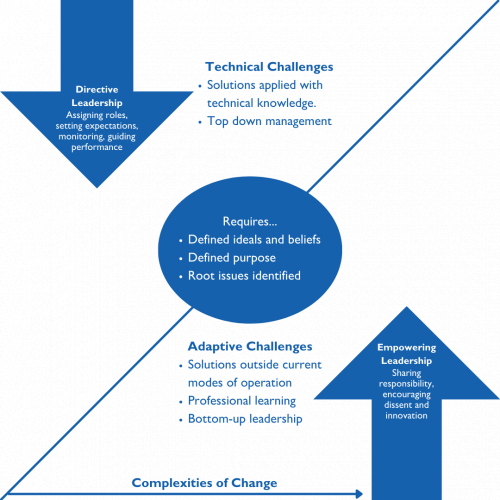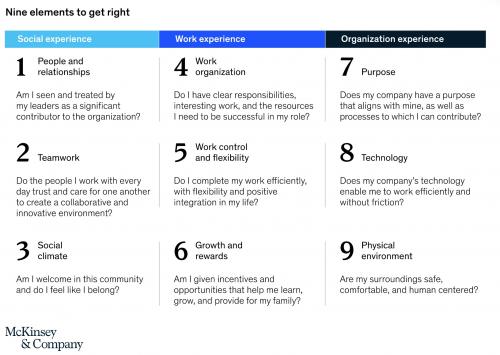Over the past month, some KASB staff and I have been traveling the state visiting with board members, superintendents, and clerks as part of a listening tour. We start each of these conversations with a simple question, “What is your greatest challenge locally?” In an overwhelming majority of these visits, the number one challenge is recruiting and retaining staff.
There has been much made about the great resignation across the nation and the accelerant that COVID has been for resignations and retirements. Back in the “good ole days,” the staffing shortages were just in SPED, math, science, foreign language, FACS, and Ag education. We are currently seeing educator shortages in the areas listed above, along with all the other positions. We have heard stories of elementary teaching positions that have zero applicants in some of our most rural areas, where traditionally there have been a handful of options. COVID has shone a bright light on a challenge that has been building for many years. This challenge is the perfect combination of baby boomers retiring, public education being attacked, and the perpetual undervaluing of educators.

The foundation of a great education system is great teachers, so how are school boards and leaders going to address these widespread shortages? Step one is to act in the immediate future to build a system that supports your educators, so you can retain the people that you have. The long term solutions to these challenges probably warrant a separate blog to explore the systemic challenges that must be addressed. As leaders we must innovate immediately to respond to the staffing challenges that we are experiencing; our systems are not going to snap back to the way they were operating before the pandemic. This staffing challenge is adaptive, there is not a single known or simple solution that reverses the trend. The adaptive nature of this challenge will force leaders to innovate in their approach to retaining and supporting staff. Below is a quick reminder of how leaders must address adaptative challenges, I have written about this a few times over the years. This is adapted from Ron Heifetz's adaptive leadership research.
Let’s take the model to the left and apply it to the challenge of recruiting and retaining staff. Starting in the center with our beliefs/ideals, we need to support our educators to improve our student’s success. The root issues are a shortage, or inability to attract or retain the staff we need to keep our school district supporting our students' needs. Looking at the upper half of this model it becomes clear that there is not an existing solution that will address the root issues. This moves us to the lower right half of the model which forces us to operate outside of our normal process and bring other voices and ideas to the table to find solutions.
What are school boards and educational leaders going to do to address this adaptive challenge? There is a mindset in the field that if we just paid more, we would not have this problem. While compensation is part of the solution it is not the only piece that has to be discussed. In a recent article, I read, they discussed getting the workplace experience right. The following graphic shows nine elements that must be addressed to get it right. Substitute school district or school for the company within these elements.
McKinsey’s nine elements create a great starting point for conversation as school boards, superintendents, and leaders, sit down with their staff and try to figure out how to innovate the workplace experience to keep the people that we have in this profession.

Other pieces of evidence that support that it will take more than just paying more to recruit and retain educators came out in the recent Kansas Educator Engagement and Retention Study, conducted by Emporia State in partnership with KASB, KNEA, and USA-Kansas. The study found that educator engagement is a significant driver of educator retention. The full report of this study will be released in the next couple of weeks. It outlines many areas that could be addressed within our school districts to increase our educator engagement leading to higher levels of retention. No surprise, many of the nine elements outlined in the McKinsey article show up in the educator study. I would encourage board members to sit down with their superintendent to discuss this report once it is publicly released.
https://www.mckinsey.com/business-functions/people-and-organizational-performance/our-insights/this-time-its-personal-shaping-the-new-possible-through-employee-experience
Engaging in these conversations around recruiting and retaining staff must start immediately. In the coming weeks, school boards and educators will begin to sit down and negotiate. Compensation is always part of the conversation, but I would challenge leaders to think about what else needs to be discussed within these conversations to support and value the people that we have. A great base salary and benefits are only one piece of the puzzle for keeping educators in your district and or attracting individuals into education. Addressing the workplace experience is the larger conversation that must be had to keep the people that we have. We did not get into this challenge because of the past two years, and we will not get out of this challenge with one successful negotiation season. Start the conversation today around the workplace experience we want to create to retain the people that make our schools great in Kansas.

 Additional settings for Safari Browser.
Additional settings for Safari Browser.




